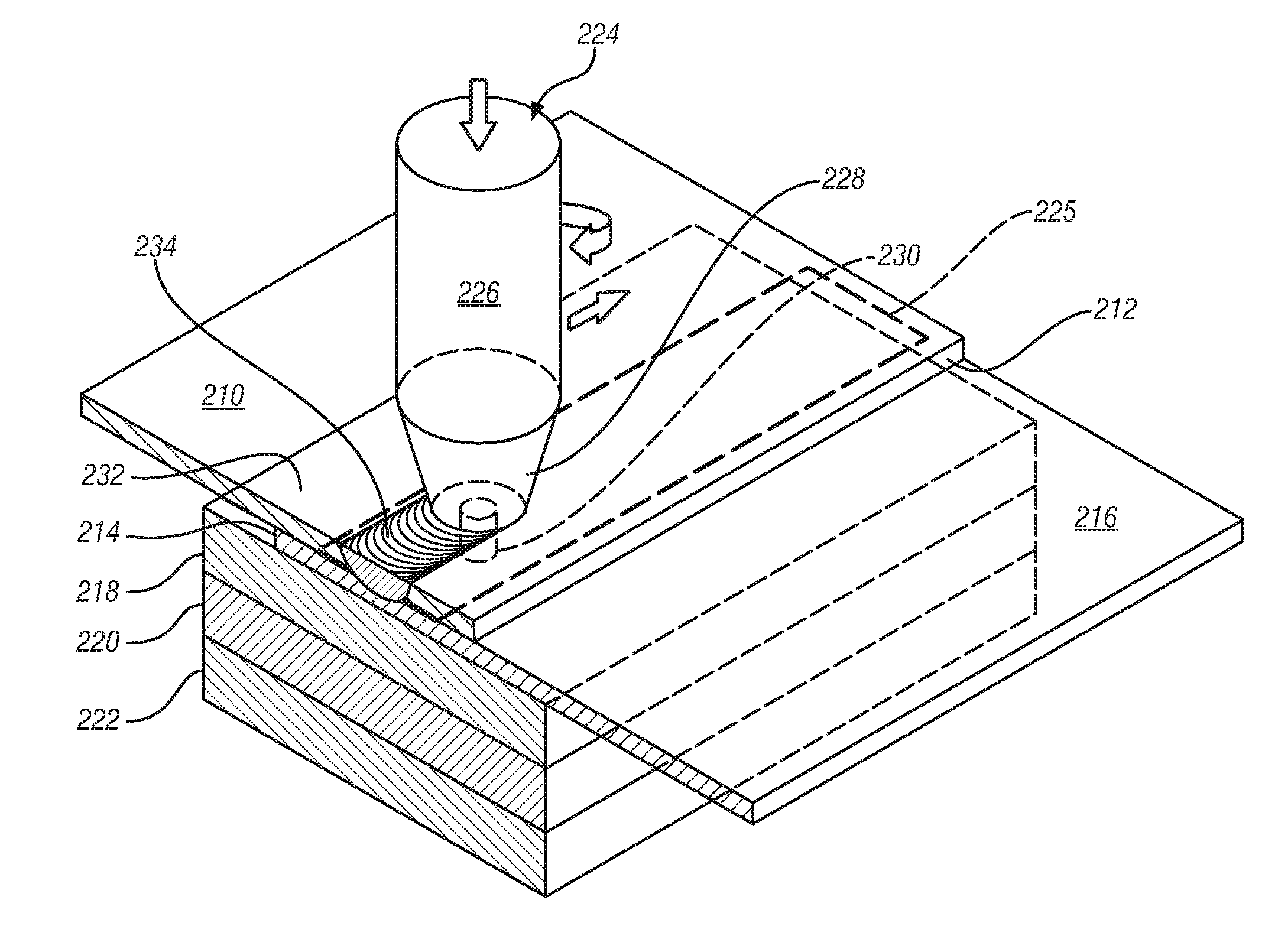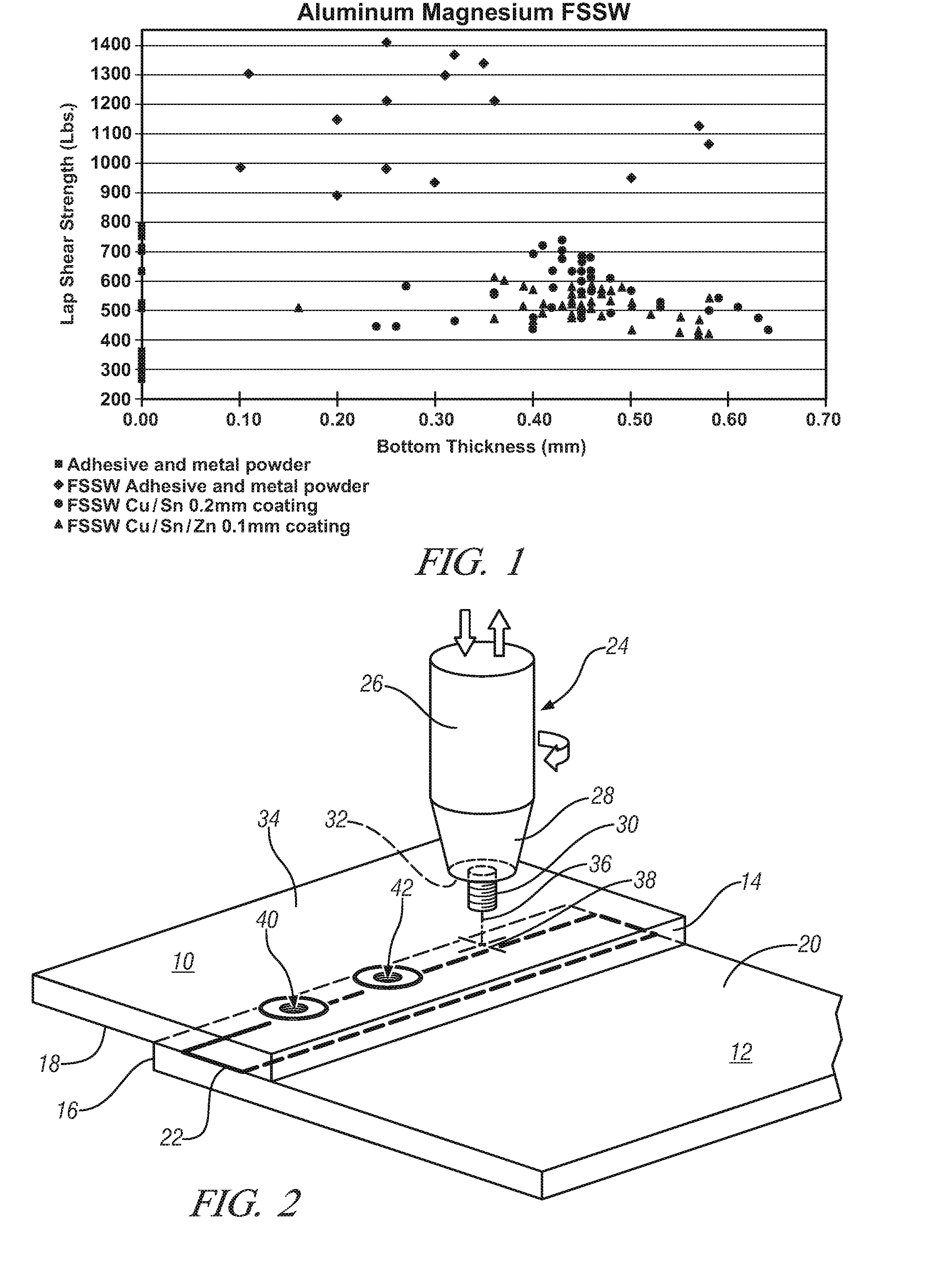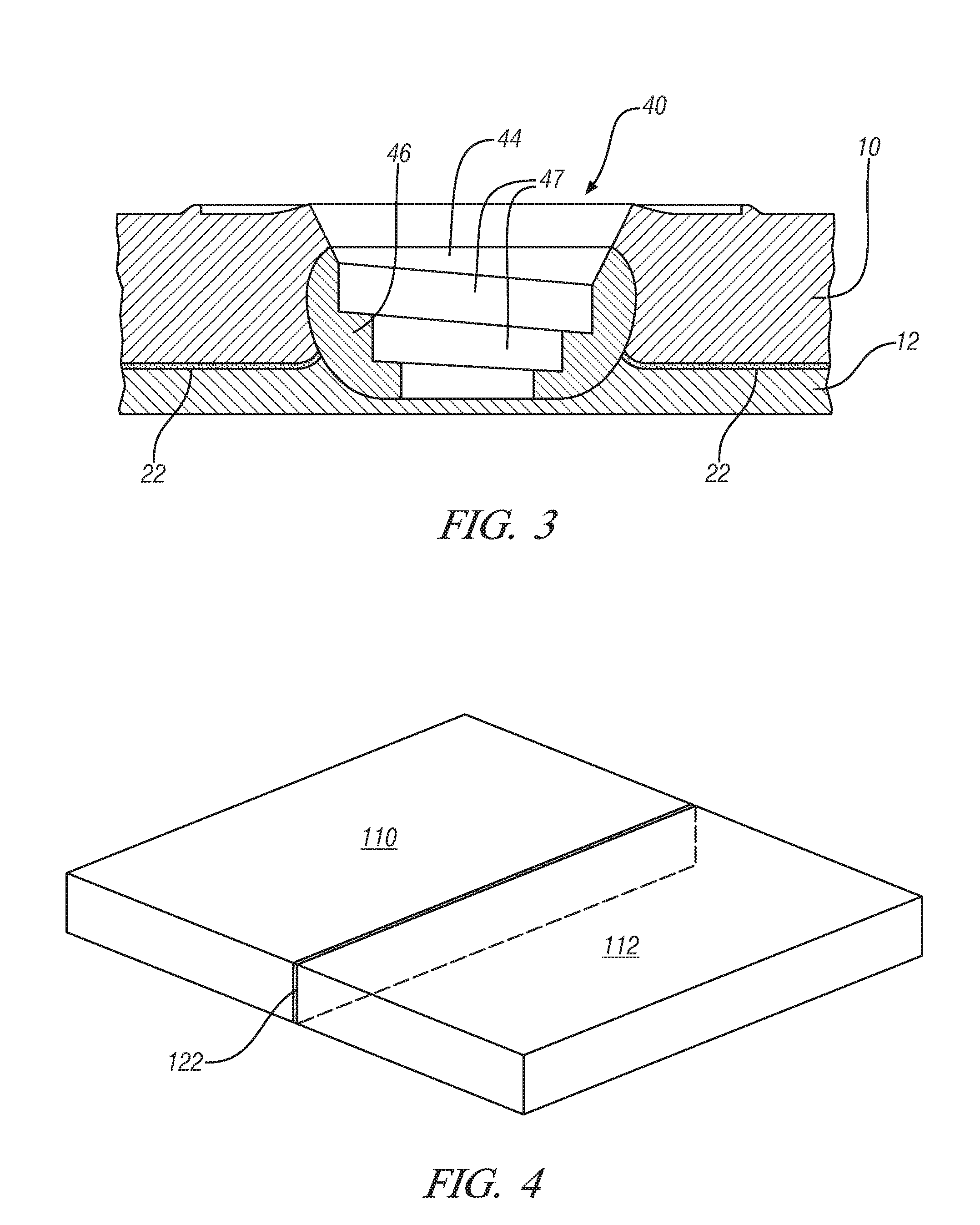Friction stir welding of dissimilar metals
a technology of friction stir welding and dissimilar metals, which is applied in the direction of non-electric welding apparatus, welding equipment, manufacturing tools, etc., can solve the problems of not only restricting the size of the stir zone, weakening an intended weld, etc., to improve the mechanical properties of the fsw, improve the corrosion properties of the weld joints, and strengthen the weld bond
- Summary
- Abstract
- Description
- Claims
- Application Information
AI Technical Summary
Benefits of technology
Problems solved by technology
Method used
Image
Examples
Embodiment Construction
[0023]Friction stir welding of dissimilar metals, for example aluminum alloy to magnesium alloy workpieces, often causes the formation of a fairly large amount of brittle, low melting point intermetallic phases, which is undesirable for attaining high joint strengths. Melting in FSW operations may cause the stir zone material to stick to the pin tool and thereby only low joint strengths are achieved.
[0024]In various examples, friction stir spot welding of 1.6 mm thick, AA5754 aluminum alloy strips to 1.3 mm thick, AZ31 magnesium alloy strips was conducted. The pieces were supported on a steel anvil. A friction stir tool having a probe height of about 2.4 mm, a probe diameter of about 3 mm and a tool shoulder diameter of about 10 mm was rotated at a speed of 1600 rpm and applied to the aluminum surface at a force of about 8 kN. The probe had a threaded external surface. The probe penetrated through the aluminum strip and into the magnesium strip. The plasticized spot weld was formed ...
PUM
| Property | Measurement | Unit |
|---|---|---|
| temperature | aaaaa | aaaaa |
| melting temperatures | aaaaa | aaaaa |
| melting temperatures | aaaaa | aaaaa |
Abstract
Description
Claims
Application Information
 Login to View More
Login to View More - R&D
- Intellectual Property
- Life Sciences
- Materials
- Tech Scout
- Unparalleled Data Quality
- Higher Quality Content
- 60% Fewer Hallucinations
Browse by: Latest US Patents, China's latest patents, Technical Efficacy Thesaurus, Application Domain, Technology Topic, Popular Technical Reports.
© 2025 PatSnap. All rights reserved.Legal|Privacy policy|Modern Slavery Act Transparency Statement|Sitemap|About US| Contact US: help@patsnap.com



